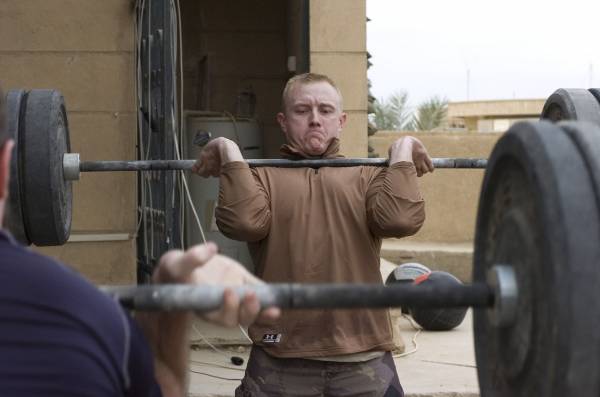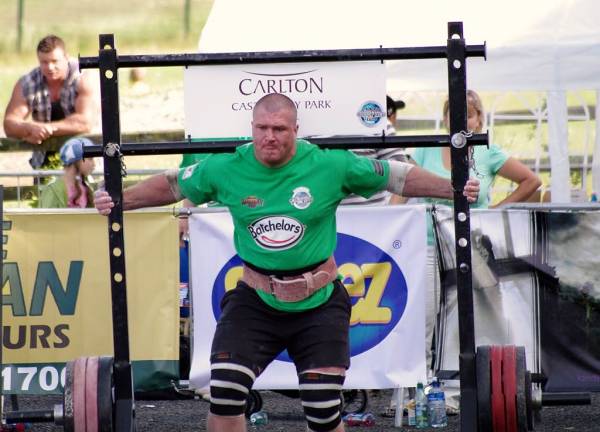It just won’t move. Try as you might, your squat is stuck. And it has been for a while. You’ve given all sorts of set and rep schemes a go. You’ve tried programs that your strong mates have suggested, a Russian squat program or two, and various tips you found through Internet research.
You put more and more hard work in, but your squat ain’t budging. It’s time to stop guessing what will kick start your squat, and take a step back to see what the underlying reasons behind your stalled squat might be.
Working hard to improve your squat doesn’t have to mean big weights, lots of volume, and throwing everything but the kitchen sink at it.
1. Find a Program That Works and Stick With It
When your squat is stuck, instinct often tells us to throw the book at it. You hear about a sure-fire way of improving your squat, plug this new approach in to your weekly training plan, and after a couple of weeks, retest your squat.
But it didn’t work. Damn it, another two weeks wasted. Better move on to something else.
Also, why does your program have to be something you have not done before? I see this all the time – a reluctance to look backward, in case you end up going in the same direction. A feeling that to progress, you need to try something new.
I don’t blame you. A glance at the Internet will throw up all manner of secrets and gimmicks. People want quick results, and trainers want quick money, so businesses supply clients with a bag of tricks. Of course, none of these work, and so the cycle continues, with the constant lure that you’ll find the Next Big Thing just around the corner.
Push Past: All this leapfrogging is doing you no favors. A couple of weeks is not enough to assess the effectiveness of a program. Allow your newfound approach time to kick in.
And if you stumbled across a training system that worked somewhere in your past, then look back at your training logs and reinstate it. You already know it works for you, so why wouldn’t you go back to it? Chances are you stopped doing it as soon as it worked the first time. Us humans have a tendency of doing that. We find something good, and then we either get scared and back out, or get greedy and need more. If it works, or worked, do it.
What’s the worst that can happen? Your squat stays the same? That was the case anyway, so you’ve lost nothing.
2. Consider Your Methods of Testing
Constantly retesting your squat is not doing you any favors, either. It’s taking time and valuable resources away from you achieving the very goal you are testing for. Not to mention, it’s frightening the CNS into keeping your squat exactly where it is. If your nervous system perceives constant threats to your wellbeing (constant pushing of limit lifts), it will do everything it can to stop you from causing it any more concern.
Push Past: There’s more to testing than 1RMs. Has your 3RM or your 5RM gone up? Does the same max weight feel easier? Is the bar is moving faster at a particular weight? Maybe you can now hit a higher number of reps at a weight close to your max? These are all indications of getting stronger. Is the goal to get stronger or to lift the heaviest weight? Think about that one.

It’s all too easy to say that your squat is stuck. But why? What are the causes of your failures?
3. Consider Where the Problem Lies
So your squat is stuck. But where is it stuck? Where do you become unstuck? Or more to the point, where is your sticking point? Okay, I’m out of glue jokes. Don’t think I’ll be able to make any more stick. The point is, it’s all too easy to say that your squat is stuck. But why? What are the causes of your failures?
Push Past: Perform some analysis on what is happening when you are unable to complete a squat.
A couple of questions to ask yourself:
- Is it a technical fail? A physical fail? A mental fail? A combination?
- If you hit a sticking point, where is it? In the hole? Half way up? At the top?
The answers to these questions will funnel your focus to a more specific, and thus more effective solution. For example, if your technique lets you down, you can focus on fixing that part of the movement through partial range of motion reps. If it’s a mental issue, what is different about your approach to missed squats compared to successful ones?
If your sticking point is at the bottom, and you feel you are losing tension, you can take a look at whether you are creating enough tension in the first place. If it’s at the top, are you accelerating throughout the full range of motion decisively? Band and chain work may help with that.
4. Do Some Strongman
Step away from the bar, sir. There’s nothing to see here, please move along. When was the last time you did something aside from barbell squats to improve your squat? I know what it’s like to be in stranded in plateau valley, and it’s no fun. Everything seems uphill from there. So something that is both fun and also has massive carryover to your squat is not a bad idea at this stage.
Push Past: Get yourself under a yoke. Play about with it. Go light over a long distance, heavy over a short distance, and some stuff in between. Do you think putting a heavier weight than you’ve ever squatted before on your back and walking (i.e. performing a series of miniature one-legged squats) is going to transfer over to your squat? You bet it will.

Strongman training is fun and also has massive carryover to your squat.
5. Work on Your Movement
Load and volume are not the only two variables you can play with to elicit improvements. Have you considered progressing your movement?
The danger with doing the same movement over and over again, even at different load and volume parameters, is that your body grooves itself into the path of least resistance – the way that is easiest. This is not necessarily the most effective way in terms of muscle recruitment, nor the best way for injury prevention (and you’re not going to get stronger if you’re stuck on the side lines).
Push Past: This path of least resistance is what your body has figured out is the best and most efficient way of moving, based on your current abilities. So in order to progress through movement, we need to retrain your body to move in a way that we determine is best for lifting weight, muscle recruitment, injury prevention, and anything else important to us.
There are many good ways to groove better movement patterns, including:
- Movement drills that teach you to groove good movement on every rep, such as my squat therapy drills.
- Simpler squat versions, for example Zercher squats, that enable you to squat with great form on every rep.
- Different bars, stances, or any other variations of the squat, even subtle variations, may help you to build on movement weaknesses, whether you realize these deficiencies or not.
Summary
Working hard to improve your squat doesn’t have to mean big weights, lots of volume, and throwing everything but the kitchen sink at it. Often the more effective approaches will be the more subtle ones, the solutions that take a moment of thought and reflection to figure out.
Consider these points and carefully apply them. That way, when your squat starts to shift again, you’ll know exactly what made it happen. Let me know when it does.
More Squat Tips:
- Squat Therapy: 4 Drills That Will Improve Your Squat
- Squats and Hip Dysfunction: 2 Common Problems and How to Fix Them
- In Over Your Head: Pro Advice for a Better Overhead Squat
- New on Pulse Beat Fit Today
Photo 1 by Cpl. Jennifer B. Poole, via Wikimedia Commons.
Photo 2 by Staff Sgt. Daniel Yarnall, via Wikimedia Commons.
Photo 3 by By Munsterbusiness.ie via Wikimedia Commons.






